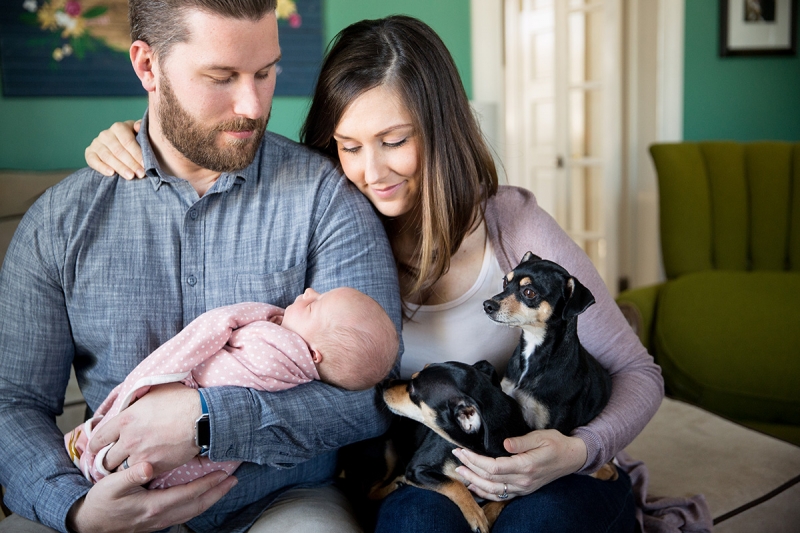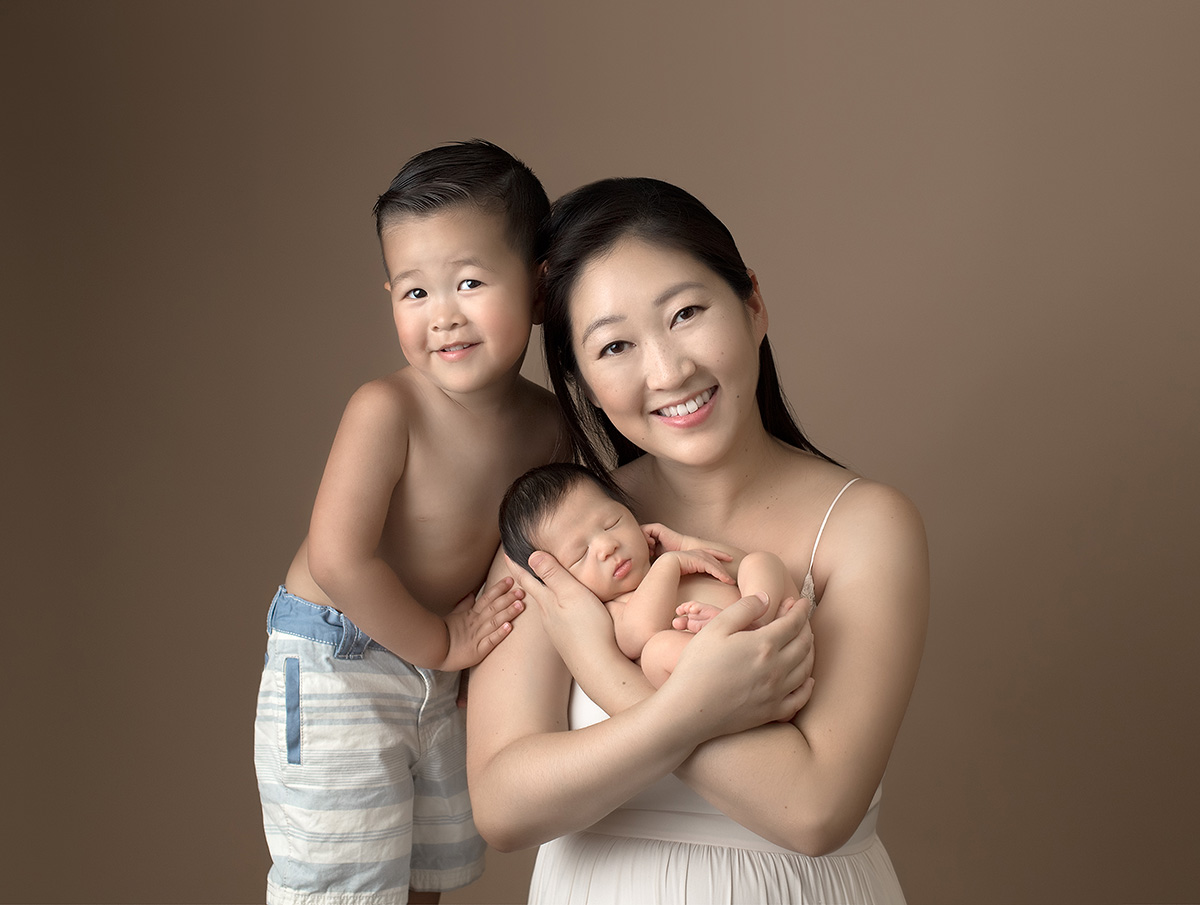Case study: In-person sales and print products saved these studios
If your photography business is struggling, it could be because you're not doing in-person-sales
• August 2017 issue
Face to face
Kate Mitchem, Rachael Boer, and Gaby Chung share a common story: They photographed their own families as talented amateurs, then grew into respected professionals by steadily improving their images through study and hard work. And these fledgling entrepreneurs all languished in the purgatory of low rates and sub-par profitability. Their personal lives suffered as they spent too many hours behind the camera yet there were few profits to show for it.
The turning point for all these photographers came with the introduction of in-person sales and the implementation of pricing structures strategically designed to sustain their businesses. Their stories are similar, but their experiences are unique, and each has lessons to share with other photographers struggling to distinguish themselves in a field where distinction is hard earned.

1. Kate Mitchem, Kate Mitchem Photography, Manasses, Virginia
Kate Mitchem was doing senior portraits for $400. That included the session and all the digital images. Hours of hard work were turning little profit. But she didn’t believe she could do in-person sales.
“I didn’t have a studio space for sales meetings, and I couldn’t afford the overhead,” she says. “Switching to in-person sales and increasing my prices seemed liked a big risk. After all, if I wasn’t busy at $400 per session, how could I get $2,000 a session? I also thought, as a single mom, if I can’t even afford to take my kids out to eat, how could I spend $2,000 on photographs?
As soon as she asked that question, Mitchem realized that she’d been projecting herself onto clients and preventing herself from making her business sustainable.
Solution
After getting advice from several successful photographers, Mitchem understood how she’d been blocking herself from moving the business forward. She immediately increased her prices and took the leap of faith into in-person sales. Then she found another photographer willing to rent space to her on a per-session basis. Mitchem decorated the room like a high-end studio and began scheduling sales meetings for each portrait client.
At sales meetings, Mitchem uses Animoto to present slideshows of edited images on a large monitor. After the slideshow, she shows clients a selection of images in Adobe Lightroom and helps them select their favorites. Based on those selections, she recommends a package that will include everything clients want.
The first client to whom Mitchem presented the new approach spent $1,800—a $1,400 increase over her previous rate.
“I thought it was a mistake,” says Mitchem. “But she hugged me and thanked me and had tears in her eyes when she left. Right then, I realized how much I’d been missing, and how much my clients had been missing, because I hadn’t been doing in-person sales.”
Results
Two years into doing in-person sales, Mitchem says the process has changed her life. Her average sale for a high school senior portrait now tops $2,000. She does about four times the volume of work since making the switch and nets more than quadruple the profit.
Mitchem now has financial peace of mind. She’s been able to invest in new equipment, take her family on vacation, and give more time and money to her church. In May she made a dream come true by taking a photography trip to Italy.
Professionally, the process keeps Mitchem accountable. Her clients choose images during the sales session, and the package depends on the number of images they pick. If the pictures aren’t great, clients don’t order them, so Mitchem is motivated to keep improving her skills to produce the level of quality she needs to justify higher sales.

2. Rachael Boer, Rachael Boer Photography, Gaithersburg, Maryland
Rachael Boer started business in 2009 with the goal of making it a profitable part-time venture. She charged $50 for a complete portrait session with all the digital files included.
After a couple of years, Boer raised her shoot-and-burn package price to $200, but she was still operating deep in the red. Then she had an idea. Boer surveyed 15 of her best clients and asked them to send her photographs of how they were displaying her images. Not one of them had printed any of the images she created.
“I realized I was doing a disservice to my clients by not providing printing and a final product,” she says. “That had to change.”
Solution
In 2011, Boer moved to an in-person sales model with printed products. This process included a dramatic increase in pricing, with a $200 session fee and three new packages selling for $750, $1,000, and $1,500. Her goal was to average $1,000 per session.
Boer spurred new inquiries through a referral program, displays in several local businesses, and by tapping in to a church community of about 4,000 people. “But I really think the biggest change was talking more about offering a final product,” says Boer. “At the time, there was a huge explosion of moms and dads with cameras in this area. Everyone did decent work, and we all looked the same. By switching to in-person sales and upgrading my service, I separated myself from that crowd. I became the person to go to if you wanted wall art because not everyone was doing it.”
Boer conducted her sales sessions in coffee shops or clients’ homes, lugging in a huge bag of product samples and a portable display. She used preview and ordering software and eventually purchased a portable projector so she could project images directly onto clients’ walls in the exact spaces they would be hanging.
Results
Boer’s business exploded. Her average sale increased to $1,200 almost immediately and continued to grow to between $3,000 and $4,000. She more than quadrupled her annual income.
All of this happened while Boer decreased her workload. As a shoot-and-burn photographer, she typically worked in five sessions on a Saturday, plus another one or two during the week. She now pulls in a six-figure income conducting just one or two portrait sessions a week.
“So many people say they don’t have time for in-person sales because they’re too busy,” says Boer. “However, if you can increase your average sale, you can shoot fewer sessions while making more money. That frees you up to offer more time to each client and ultimately do better work.”
Boer’s in-person sales format also frees her up to spend more time with her family. She’s adamant that family life should not be a limiting factor. “I want to tell other moms: If I can do it on a part-time basis starting from the ground up and build to a six-figure income, then you can too,” she says. “It doesn’t take more time. You just have to do it the right way.”

3. Gaby Chung, Gaby Chung Photography, Glendora, California
Gaby Chung started her photography business in 2010 while in graduate school studying child development. Like Boer, she intended the work to be a sideline, a way to earn some extra money. To keep things simple and appeal to what she thought was her clients’ preference, she priced sessions at $150 and a disc of images at $175.
Chung was surprised by how much energy she invested in each session and how small the compensation was. Furthermore, Chung’s clients weren’t printing her pictures.
“Why was I putting so much into these images when my clients weren’t enjoying them fully?” she asks.
In 2014, as she wrapped up grad school, Chung was at a crossroads. Should she pour herself into her photography business or abandon it altogether and pursue a career in her field of graduate study?
Solution
Chung decided to give photography a chance by implementing in-person sales. She increased her minimum offering to $800, which included a photo session for $200 and a $600 minimum package. That immediately pushed each sale to between $1,000 and $1,500.
To build up business for the new approach, Chung started by defining her ideal clients. She figured out where they lived, where they shopped, and where they took their kids. Then she sought out the businesses her target clients frequented and offered them co-marketing opportunitiess.
Results
After making the change and boosting her prices, Chung lost all of her old clients except one. That one client didn’t care about the increased prices because she was such a fan of Chung’s work. In her first session under the new model, the client invested $3,400—more than 10 times the cost of previous sessions with a disc of images.
“Right then, even though I’d lost all my other clients, I knew the new model could work,” says Chung.
Before introducing in-person sales and print products, Chung took in $325 per session. Now her average sale is closer to $3,500. The increased sales average has allowed her to dictate a work schedule that fits with her personal life, not the other way around. Chung works three days a week and spends four days with her kids. She conducts between four and eight sessions a month.
“I have balance, and I feel like I’m being rewarded for what I do,” she says. “Now I know that this is a viable business and a career that I can do proudly for the rest of my life.”
Jeff Kent is editor-at-large of Professional Photographer.


 View Gallery
View Gallery


